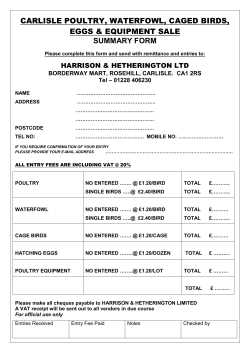
.Variation and Selection in the.. ..Egyptian Origami Bird (Avis papyrus)
.Variation and Selection in the.. ..Egyptian Origami Bird (Avis papyrus)1 INTRODUCTION: The Egyptian Origami Bird (Avis papyrus) lives in arid regions of North Africa. .It feeds on prom dates (Palmus juniorseniorus) and drinks from Palm Springs. Only those birds which .can successfully fly the long distances between the sparsely spaced oases will be able to live long enough to .breed successfully. In this lab you will breed several generations of Origami Birds and observe the effect of .various genotypes on the evolutionary success of these animals. . MATERIALS: Paper, tape, straws, .scissors, coin, six-sided die . METHOD: . 1. Prepare ancestral bird: . Cut two strips of paper, each 3 cm x 20 cm. . Loop one strip of paper with a 1 cm overlap and tape. Repeat for the other strip. . Tape each loop 3 cm from the edge of the straw. . . 2. Breed offspring. Each Origami Bird lays a clutch of three eggs. . Record the dimensions of each chick and hatch the birds using these instructions: . a. The first egg has no mutations. It is a clone of the parent. . In the interest of time you may substitute the parent when testing this chick. . b. The other two chicks have mutations. . For each chick, flip your coin and throw your die then record the results on the table. . i. The coin flip determines where the mutation occurs: the head end or tail end of the animal 1 By K. Westerling 1992, 2002 ii. The die throw determines how the mutations effects the wing. . iii. Lethal mutations: . A mutation which results in a wing falling off of the straw, or in which the circumference of .the wing is smaller than the circumference of the straw, etc. is lethal. Fortunately, .Avis papyrus birds are known to “double clutch” when an egg is lost. If you should get a .lethal mutation, disregard it and breed another chick. . 3. Test the birds. . Release the birds with a gentle, overhand pitch. . It is important to release the birds as uniformly as possible. . Test each bird twice. . 4. The most successful bird is the one which can fly the farthest. . Mark which chick was the most successful on the table. . 5. The most successful bird is the sole parent of the next generation. . Continue to breed, test, and record data for as many generations as you can in the time allotted. . RESULTS: . Use the table to record the results of your coin flips and die throws, the dimensions of all chicks, and .the most successful bird in each generation. . . DISCUSSION: . Answer these questions. Use complete sentences on separate sheet. 1. Did your experiment result in better flying birds? 2. Evolution is the result of two processes: variation and selection. . a. How did your experiment produce variation among the offspring? . b. How did your experiment select offspring to breed the next generation? . 3. Compare your youngest bird with your neighbor’s youngest bird. . a. Compare and contrast the wings of of other birds with your own. . b. Explain why some aspects of the birds are similar. . c Explain why some aspects of the birds are different. . 4. Predict the appearance of your youngest bird’s descendants if. . . . a. the selection conditions remain the same and the longest flying bird survives to produce the most .offspring. . b. the selection conditions change the worst flying bird survives to produce the most offspring. . c. the selection conditions change and the bird whose color blends with its environment survives to .produce the most offspring. . Name_____________________ Period ____________________ Date ______________________
© Copyright 2025





















